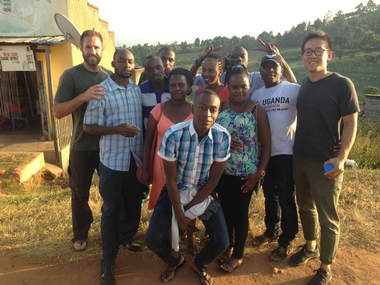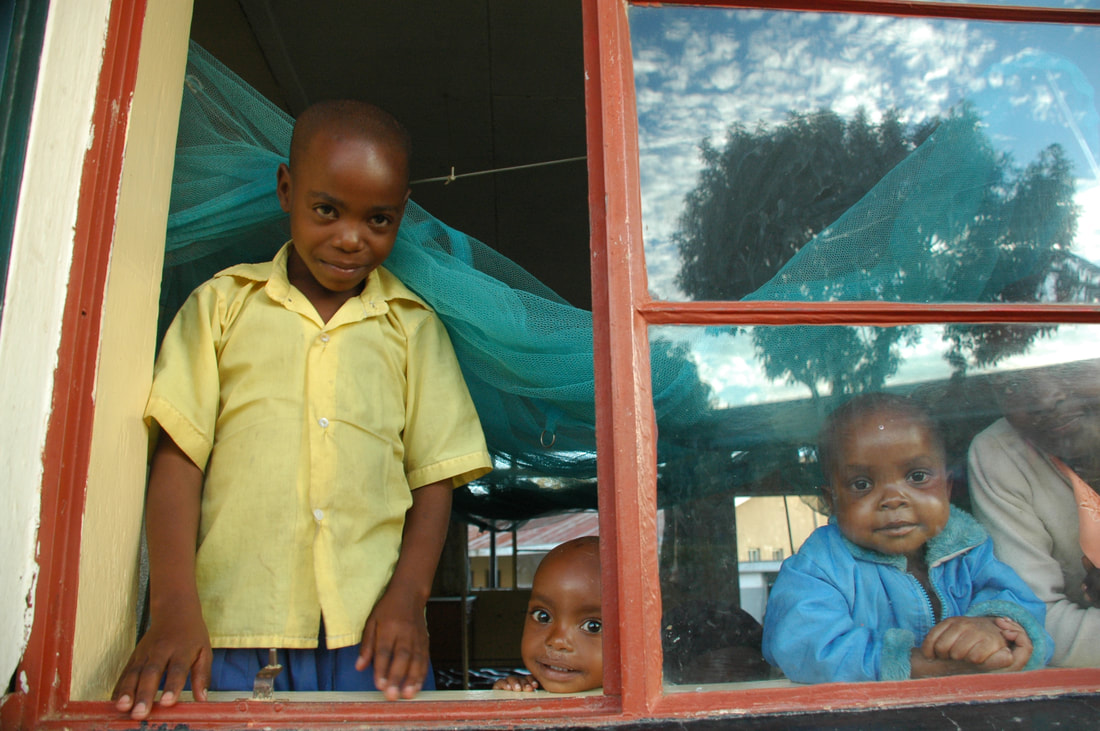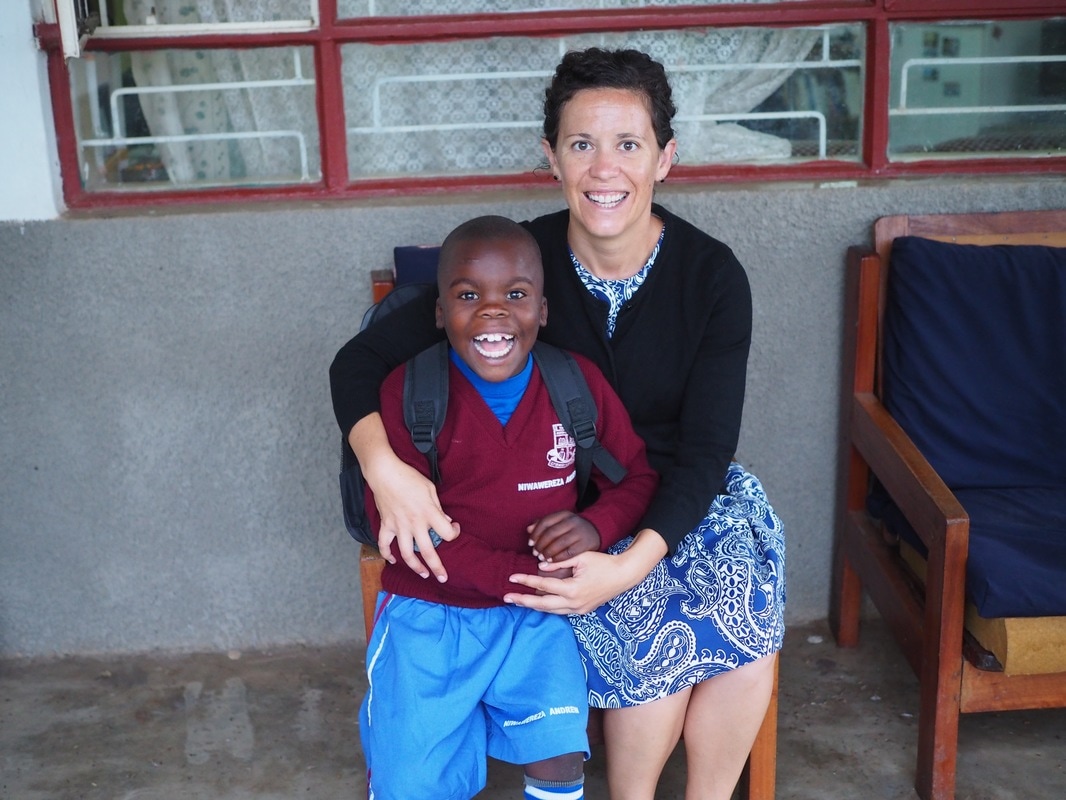Dr. Casey Patrick recently returned from a volunteer stint with GEC teaching Emergency Care Practitioners…
Alex Wang – Reflections From A Global Health Fellow
“It is remarkable to see how our faculty and staff have stepped up to the task of building emergency medicine from the ground up. ”
By Alex Wang, GEC Global Health Fellow 2017-18
The patient was a 20-something year old construction worker who fell from height onto his back and had been brought in by his friend looking dazed and in pain. At the time, I didn’t think it was anything too out of the ordinary, ordinary of course being a relative statement in any emergency department setting. The gentleman did not look “sick” as we say in ED-speak. Of course, at Masaka Regional Referral Hospital (MRRH), a governmental safety net hospital in Uganda, “sick” for us takes on a slightly different meaning.

Here at MRRH we only have 15 ED beds and approximately 30,000 patient visits a year. However, we serve some of the most marginalized patient populations who face the entire gamut of perceived and actual barriers to care that one would expect from very rural and very low resource settings. The patients come here with presentations that we would rarely see in the United States – adults with frank hemoptysis who have wasted away from multi-drug-resistant Tuberculosis, children unresponsive from hemoglobin levels of 3 secondary to P. falciparum malaria, folks with blunt and penetrating trauma from all-too-common motor vehicle accidents to the odd hippo bites, entire families with cyanide poisoning from ill-prepared Cassava, etc. The list goes on.
Often, there is very little that we can do for our patients given our means. Sometimes we are unable to perform even the most basic of medical interventions for reasons as ludicrous as the lack of IV cannulas or oxygen. We currently do not have ventilators, EKGs or a CT. Staffing-wise, the hospital can only consistently rely on two general surgeons (one who is brand new), a hospitalist and a pediatrician, all of whom are overworked and underpaid. Moreover, in the ED, we often have to rely on a rotating group of interns who are in the process of finishing their training. However, in the current system, these interns can call the shots with no supervision in a setting where there are very few incentives or consequences.
As I was going about my business, I noticed a flurry of activity in the ED around the gentleman who fell earlier. Although my role for the most part has been non-clinical, I observed as the intern ran the resus. He must have assumed that there was a bleed somewhere since systolic pressures had approached the 60s. However, someone had commented that there was notable difficulty breathing. Not taking it into account, the intern ordered another bolus of fluids with no response. At this rate, the patient was likely going to die.
The picture I paint may seem bleak, but it is the harsh and unfortunate reality. At least, having worked in the world of international development and having had prior exposure to medicine in under-resourced environments, I came to Uganda with very realistic expectations. Those who have been in the field for an extended time know that global health is a messy business. Unfortunately, people get sick and will continue to do so, particularly as the institutions around them fail. Lack of resources, infrastructure, incentives, corrupt governance, brain drain, dependence on aid – these all have become themes that are addressed far more often in academic papers than through practical and deliberate change.
However, over the past year as a Global Health Fellow, I have witnessed some incredible work being done to improve the landscape for emergency medicine in Uganda and East Africa. Global Emergency Care (GEC) has evolved from operating at a small private hospital with 5,000 ED visits/year to collaborating with multiple branches of government, academia, nonprofits, and individuals. Personally, I have been involved with everything from refining our educational curriculum to supporting our data collection and research infrastructure to developing and leveraging these partnerships. What I can definitively say is that it is awesome to witness the energy and excitement from individuals and institutions who are not satisfied with the status quo. To watch that energy and momentum translate into definitive action is nothing short of inspiring.
Just this past month, we finished the first year of our non-physician clinician emergency care training program at MRRH. This has been a new landmark collaboration that took eight years in the making between various partners and stakeholders including GEC, MRRH, the Mbarara University of Health and Technology, and the Ministries of Health and Education, among others. In short, we are offering a fully credentialed two-year training course to build a new cadre of healthcare providers in the region. Our goal is to establish a new standard of emergency care while also task-sharing the healthcare burden away from doctors into the hands of skilled non-physician clinicians. Even more impressive is the model by which we are accomplishing this – we are building sustainable capacity through a training-of-trainers paradigm, one which is locally driven by Ugandans for Ugandans in which our faculty, resources and expertise are sourced primarily from the cohorts of emergency care practitioners that GEC trained just years prior.
The intern continued to give fluids to the unresponsive patient. Meanwhile, a local fluctuance in the chest could be visibly seen. Although the ED was busy that day, one of our senior trainers, JB, approached with some of our students. After quick deliberation, he calmly asked a nurse to bring him two cannulas, which he quickly inserted into the 2nd intercostal space at the midclavicular line, bilaterally. The intern was furious – he thought that we were killing the patient. As we heard a rush of air come out, the gentleman rapidly improved. For purposes of demonstration, point-of care ultrasound showed model barcodes on M-mode. Meanwhile JB, a nurse by training, took the interns back to school on tension physiology and obstructive shock.
 It is remarkable to see how our faculty and staff have stepped up to the task of building emergency medicine from the ground up. Even though they were initially trained in patient care, they understand the exponential value they provide through educating newer generations of health care providers not limited to mid-levels but also other physicians. Personally, I myself have learned so much from each of them. And I often see other doctors acknowledge their skill and request their help, providing a level of validation and pride that certainly differentiates us in the hospital. Finally, given the scope of our data collection, we can confidently say that our work has the potential to change the entire healthcare landscape, particularly as the ED continues to represent the crucial transition point between medicine and society, even more so in these austere environments.
It is remarkable to see how our faculty and staff have stepped up to the task of building emergency medicine from the ground up. Even though they were initially trained in patient care, they understand the exponential value they provide through educating newer generations of health care providers not limited to mid-levels but also other physicians. Personally, I myself have learned so much from each of them. And I often see other doctors acknowledge their skill and request their help, providing a level of validation and pride that certainly differentiates us in the hospital. Finally, given the scope of our data collection, we can confidently say that our work has the potential to change the entire healthcare landscape, particularly as the ED continues to represent the crucial transition point between medicine and society, even more so in these austere environments.
Although my time in Uganda is finished, I see endless possibilities here for our specialty to evolve, much as it did in the 1950s back at home. I am excited for the day when our faculty will have trained a critical mass of emergency care providers to staff an entire regional referral center, followed by multiple facilities throughout the district and eventually throughout the country. I am excited to see our partners simultaneously working on building the first EM residency programs at the physician level, of which the very first cohort just finished their PGY-1. I am excited to see the government finally prioritizing prehospital and emergency care to make sure that patients have a higher level of care, including at the community. I am excited to see our specialty pioneer evidence-based practices in low-income settings and elevate the level of care in other specialties as well. And even though this process can be slow, the rewards are undoubtedly worth the effort.



This Post Has 0 Comments